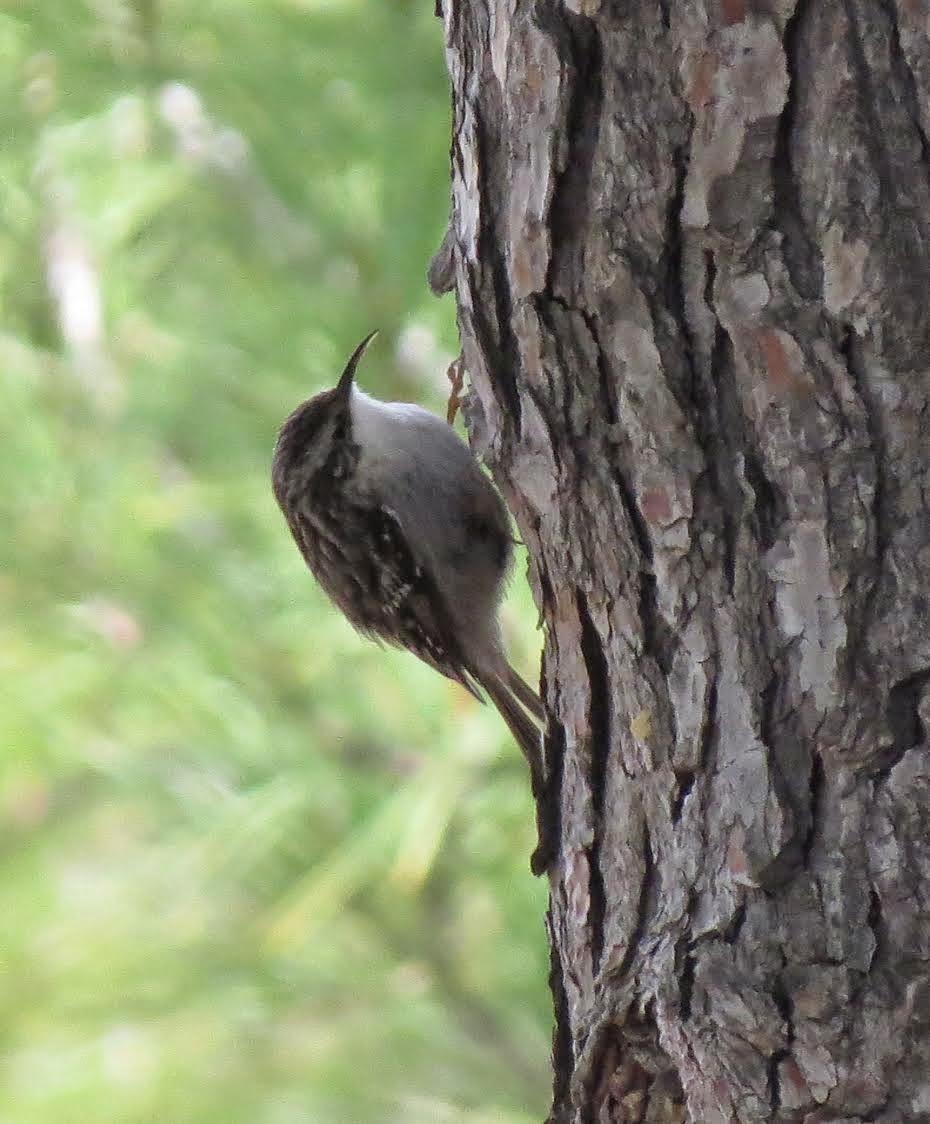Things have been moving. I was down at the Guadalhorce briefly on this same midday with David and Ann Jefferson until my knees revolted and I had to cut short or be left there. We did see
Redshanks (2), an elegant
Greenshank and a
Common Sandpiper. There were quite a few
Barn Swallows and
House Martins, plus a single
Red-rumped Swallow that I saw on my slow and painful way out. Aslo, at last, there were some
Pallid Swifts and at home in the afternoon there was a small arrival of these and also my first
Common Swift. David and Ann spotted a super male
Redstart after I'd gone (isn't it always the way?), and while on the subject of the
Night Herons seen by Dave & Co., Dave and Ann had seen a flock come in off the sea near Torrox earlier this week and there was another report of a flock from Velez Málaga. T'was about this time of year many moons since that some of us were delighted by a flock of 80+ coming in off the sea at the Guadalhorce.
I chose to go down to Las
Norias this week after checking the long range weather forecast last
week. It predicted sun with clouds. As Richard chauffeured Val and I
south on the E15/A7 motorway in pouring rain I was getting very worried!
But as we approached Almeria the rain turned to drizzle, then ahead of
us we could see brightness and even small patches of blue sky and sun.
We met up with Alan, Rod, Colin and Sandra at the Jct 420 service
station. After a coffee, with biscuits supplied by Sandra, we made our
way to Las Norias. Upon our arrival the sky was full of birds, many
eating the millions of midges.
 |
| Night herons |
I chose to go down to Las
Norias this week after checking the long range weather forecast last
week. It predicted sun with clouds. As Richard chauffeured Val and I
south on the E15/A7 motorway in pouring rain I was getting very worried!
But as we approached Almeria the rain turned to drizzle, then ahead of
us we could see brightness and even small patches of blue sky and sun.
We met up with Alan, Rod, Colin & Sandra at the Jct 420 service
station. After a coffee, with biscuits supplied by Sandra, we made our
way to Las Norias. Upon our arrival the sky was full of birds, many
eating the millions of midges.
 |
| Black-necked Grebe |
I first saw a flight of Avocets, then the
hundreds of Swifts, mostly Common but a few Pallids as well. There were
many Red-rumped Swallows and Barn Swallow. Amongst this lot were some
House and Crag Martins. A Zitting Cisticola also displayed above us.
On the water to the left were Black-necked and Little Grebe. The
commonest ducks were Red-crested Pochard, but we also saw Gadwall,
Mallard and White-headed Duck. Alan spotted a distant Purple Swamphen in
the reed line. I spotted a Gull-billed Tern flying towards us. Would've
had a great photo but the big camera was in the car. I then spotted
some Night Herons flying our way. Ran to the car and got the camera
before they ( eventually 26) flew over us. Colin spotted a rarity these
days....a Chiffchaff.
We
made our way to near the old heronry. Here there is a muddy and rocky
spit. Very good for waders. We saw Redshank, Common Sandpiper, Little
Stint, Dunlin,
Little Ringed Plover, Black-winged Stilt and a pair of
Ruff/Reeve.
 |
| tired Pratincole |
Suddenly
out from behind some discarded plastic sheeting there appeared a
Collared Pratincole, our first of the year. Also seen were Shoveler and Teal. Alan identified a couple of Sand Martin amongst the perched
Barn Swallow. A Willow Warbler was heard. Two Iberiae Yellow Wagtails
were also seen.
We
next stopped on the second causeway. A Cattle Egret was seen by some as
was a Great White Egret. The reeds here used to be full of Egrets and
Herons, but this heronry was deserted. Thought they'd be starting to
congregate to nest by now. Two pairs of Great Crested Grebe were on the
smaller pool. A female Blackcap made an appearance as did another Marsh
Harrier.
On our
way for a coffee we added a Kestrel and some Greenfinch to the list.
As is now our norm, we turned right to watch birds from the northern
side of the salinas on the outskirts of Roquetas. We saw our third Marsh
Harrier of the day. As John was not able to be with us today, it was
down to me to point out the 6 Spoonbills amongst the many Greater
Flamingo. Wildfowl seen included Shelduck, Shoveler, Red-crested Pochard
and a smart male Pintail. Alan spotted a distant Greenshank whilst I
found a Black-tailed Godwit. There were hundreds of Black-winged Stilt. I
saw some Lesser Black-backed Gulls. Richard spotted a lone wader. It
was identified by Alan as a Wood Sandpiper, a brilliant end to our list.
We saw 58 species. A great days birding and so lucky with the weather!























